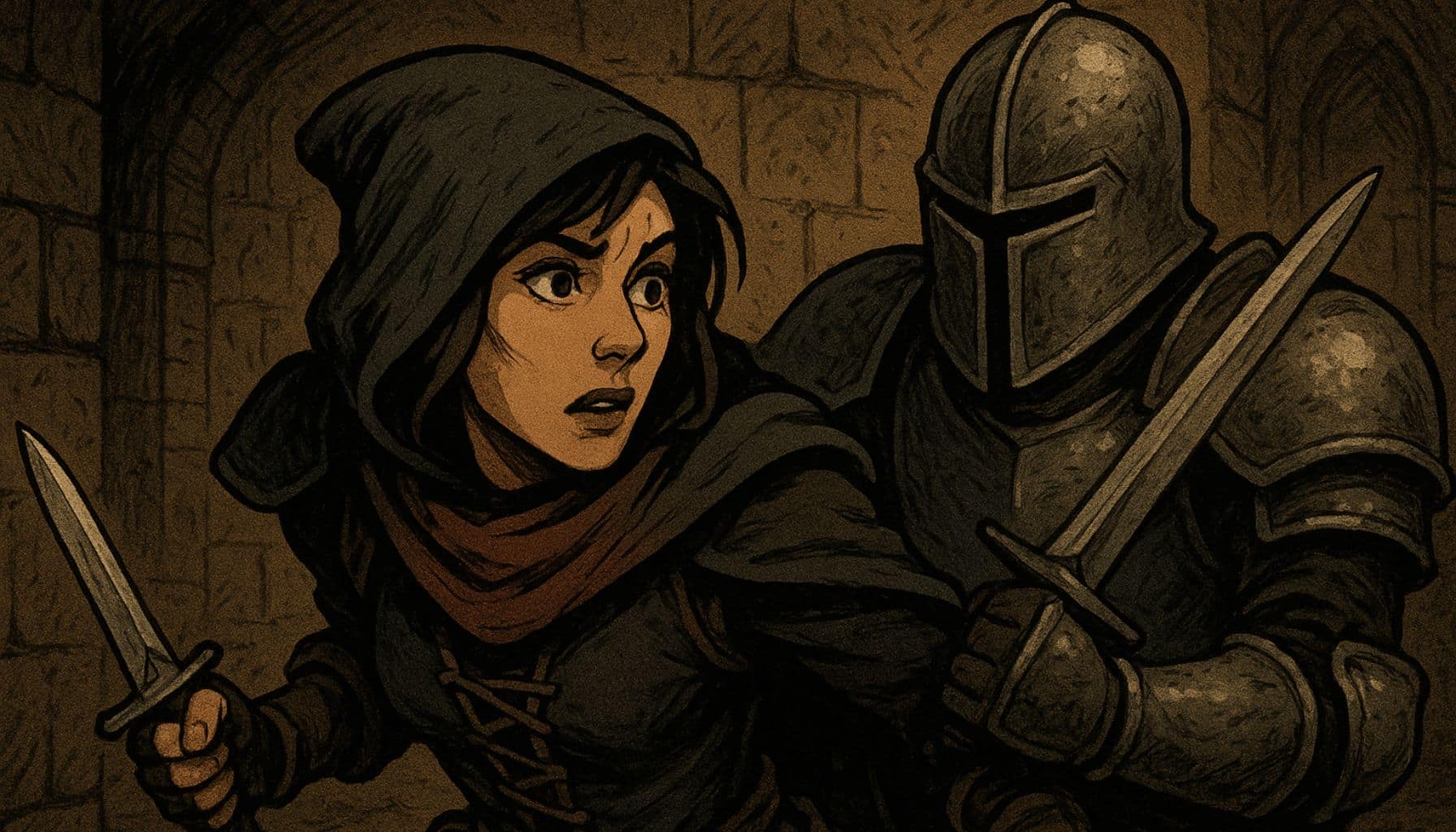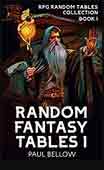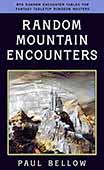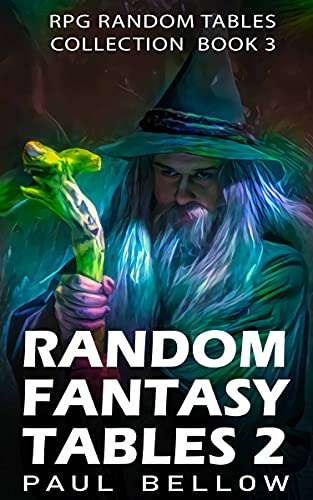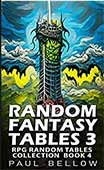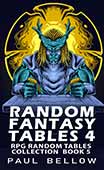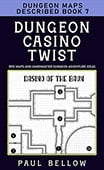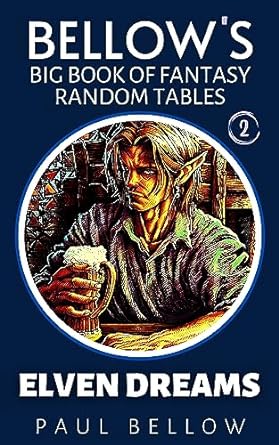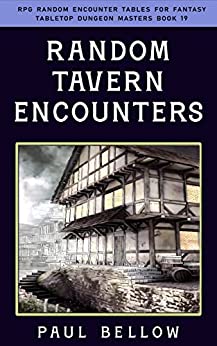Classes sit at the combustible heart of Dungeons & Dragons. They do not just offer a list of powers—they sculpt the very way you engage with the world, carve your legend’s silhouette, and flavor how you clash with monsters, unravel puzzles, and tangle with fate. Every table is a riot of dreams and ambitions, but it is class choice that decides whether you lead the charge, command shadows, or warp reality itself. Your journey, whether lone wolf or centerpiece in a fellowship, is filtered through the prism of class.
The class you pick shapes every swing, spell, negotiation, and bond. Wizards and Warlocks twist the arcane into raw power or illicit bargains. Fighters and Barbarians wade into chaos, muscle and will made manifest, defining encounters with brute certainty. Each class paints archetypes onto the canvas of fantasy, letting every player inhabit a myth they want to live—ancient trickster, storm-caller, relentless sentinel, or inspired creator.
Growth in D&D means more than numbers ticking ever upward; it means unlocking new avenues of play and personality. Classes provide the scaffolding: you expand through subclass choices, spell picks, and feats, all woven together in a tapestry of advancement. Roleplay thrives on these boundaries and gifts, fueling drama at the table—when the Cleric’s faith collides with crisis, or the Rogue’s wit outpaces blade.
No other element is as vital, because classes also establish tone. They decide the cadence of a campaign, whether high heroics or sodden neon grunge, through the spells cast, the oaths sworn, the songs sung, the blood spilled. The very rhythm of the adventure bends to the classes assembled, and to the yearning at your heart’s core.
This guide digs into every single core class from the 2024 Player’s Handbook—thirteen in all—and goes further, threading in Unearthed Arcana playtest gems like the Psion and alternate subclasses. The 2024 rules refresh elevated balance and ease of use while keeping the marrow-deep flavor that makes D&D endure. Whether you are new and searching for your first echo of heroism, or a veteran chasing the thrill of reinvention, this resource places all you need at your fingertips—reference, inspiration, and practical advice.
What Changed in DND 2024?
Fifth Edition’s decade-old roots spread wide, but the 2024 Player’s Handbook sank in phosphorescent new veins. Martial classes like Fighter, Barbarian, and Monk received Weapon Mastery—a system built for momentum, giving every swing extra teeth and tactical options. No more endless strings of “I attack”; every turn promises a new twist—a shove, a stun, a bleed—imbuing even simple characters with a dance of choice.
Try my AI Tabletop RPG generators...and an extensive library of content!
Casters, from Wizards to Bards to Clerics, caught cleaner spellcasting. Rituals, preparation, and the spell lists themselves sharpened up; subclass choices now weave in earlier and more evenly, letting you taste your chosen flavor from the start. Spells scale with you: less dead weight, more punch, more tricks right when you need them. The labyrinth of features straightened into a comfortable corridor, keeping complexity for those who hunger for it while opening more doors for casual or new players.
Instead of subclasses haphazardly stacking at different levels, the new rules install a symmetry. Progress feels steady—your magics, maneuvers, and specialties ripen at the same intervals, giving every character path a more organic curve. Even support abilities and scaling effects, like Bardic Inspiration or Paladin’s auras, felt the polish. The result is a play experience where growth is palpable, not merely incremental—a class’s story threads now show up in your play, right at the table.
These tweaks go beyond math. Weapon Mastery pins adrenaline to every action for martials, while spellcasters savor smoother, more reliable magic. The game’s hum sharpens. Fighters swap tactics turn-to-turn instead of just numbers. Wizards can flex utility without drowning in minutiae. Nearly every class now moves with a new confidence, less bogged down by footnotes and more ready to storm the narrative.
| 2024 Update | What Changed Mechanically | How It Affects Playstyle |
|---|---|---|
| Weapon Mastery | New effects on attacks for martial users | More choices, dynamic melee turns |
| Unified Subclass Progress | Subclasses begin earlier, even intervals | Smoother growth, early distinctiveness |
| Streamlined Spellcasting | Simplified prep, scaling, ritual rules | Less confusion, faster turns |
| Scaling Abilities | Core features scale better over time | Fewer dead levels, always relevant |
| Class Feature Reworks | More everyday usefulness, less “trap” | Every class feels impactful |
| Quality-of-Life Tweaks | Cleaner feat, spell, and item language | Easier rules referencing, flexible builds |
The 2024 design philosophy leans hard into clarity, balance, and respect for tradition. New features sharpen, but familiar heartbeats remain. Old-school archetypes did not vanish; instead, they thrive with newfound grace and edge, opening up space for both table nostalgia and fresh strategy.
⚔️ Fantasy RPG Random Tables Books
Make life as a Gamemaster easier…
If you play Dungeons & Dragons, Pathfinder, or other fantasy RPGs, this
RPG random tables series
is packed with encounters, NPCs, treasure, and more. Available in eBook or print—either way, you’ll have a wealth of adventure ideas at your fingertips.
You will find your favorites—Paladins smite, Wizards dazzle, Barbarians rage—just with a sleeker, more potent control of the action. Streamlined rules mean fewer rulebook detours, while legacy flavor soaks every option. For those comfortable with the old scripts, nothing vital is lost—just trimmed, polished, brought closer in reach.
Most groups will notice the difference not in what they can do, but in how often they want to do it. Expect fewer “can I do this?” moments, and more “this is what I do!” at the table. 2024 shapes the game to make every session a showcase of potential, with balance tighter, but imagination wider than ever.
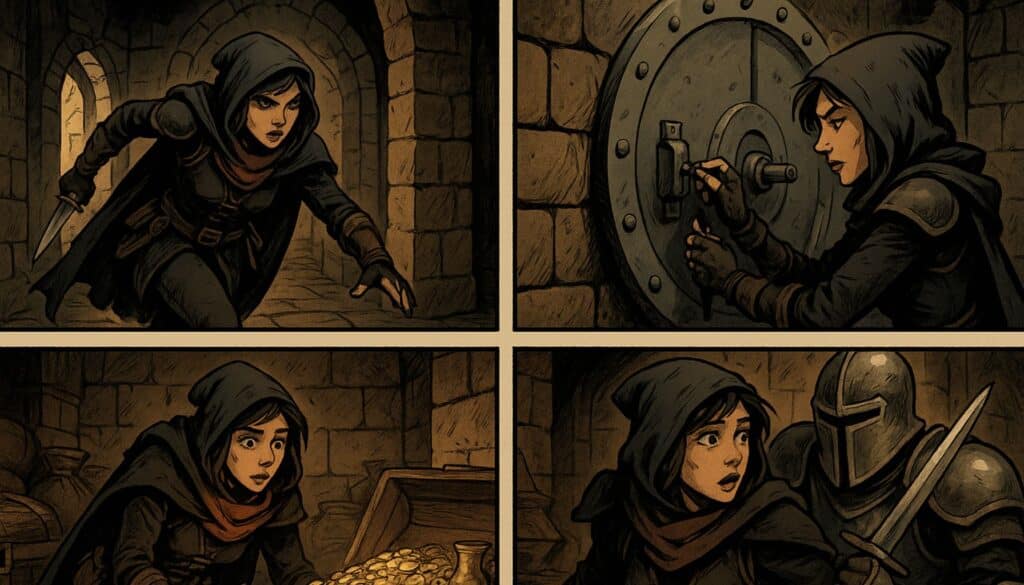
How to Choose a Class (Fast)
Do not begin with stats. Picture the scene—the moment that set your heart pounding when you first cracked a fantasy novel or queued up a film. That is the ember. Whether you want to leap from the shadows and silence a foe, conjure a blizzard at a demon’s feet, or stand, shield raised, between terror and innocence, D&D lets you play that pulse. Let that image pick your class for you.
Party roles help frame the big question. Do you want to blast the opposition apart, slip past their defenses, or keep your friends alive? Every group needs a mix: blaster, striker, defender, support, controller, face, scout, and utility. Wizards control the stage. Rogues unravel silence and secrets. Clerics heal, Bards coax, Paladins stand unbroken. Ask yourself—what role feels viscerally exciting? Commitment starts here, not in a spreadsheet.
Complexity matters. Some classes run clean—Barbarian and Fighter reward bold action and minimal bookkeeping. Others, like Wizard or Artificer, demand attention and cleverness, serving up deep, shifting strategy. If you crave a pure, kinetic rush, go simple. If you revel in strategy and layering effects, dare to reach for the intricate. The world grows wide for all of them.
Multiclassing waits for those who want to blur boundaries, blending power and unpredictability. Not for beginners, this trick lets you forge a character that no single box can contain—Sorcadin, Hexblade, Rogue/Monk—and commands a roadmap and patience. When in doubt, start single-class, and learn what stirs you at the table.
Fantasy Archetype Moments & Best Classes
- Striding into a burning hall, unflinching: Paladin, Fighter
- Leaping from rooftop to rooftop in the rain: Rogue, Monk
- Summoning a wall of flame with outstretched hands: Sorcerer, Wizard
- Bellowing a battle cry as you break a siege line: Barbarian, Fighter
- Whispering secrets to a forgotten god: Warlock, Cleric
- Shapeshifting mid-fight to maul your foes: Druid
- Disarming a death trap in midair: Rogue, Artificer
- Unleashing psychic terror on a tyrant: Psion
- Inspiring a warband with a rousing song: Bard
- Melting into fog and slipping past guards: Sorcerer (Shadow), Warlock
- Commanding wild beasts to swarm your enemies: Druid, Ranger
- Calling a thunderstorm to shatter an army: Druid (Storm), Tempest Cleric
- Bargaining with a dragon using silver tongue: Bard, Rogue
- Hurling a spear that crackles with divine energy: Paladin, War Cleric
- Animating a suit of armor to fight at your side: Artificer
- Shadow-stepping through a haunted manor: Monk (Shadow), Warlock
- Inventing a gadget that saves the day: Artificer
Whatever lights your fuse, chase that thrill. Do not let optimization override joy. D&D sings brightest when you play what excites you—not the internet’s flavor of the month. The “right” choice is the one that makes you gleam at the table.
Synergy matters, but happiness trumps calculus. Heroes come alive in odd mixtures, and a party built on excitement plays harder and lasts longer. Experiment. Try new roles. Learn what draws your friends to the table, and let your class answer in kind. The campaign will thank you.
The 13 Core DnD Classes
Each class below unpacks its distinct rhythm—vibe, primary ability, party niche, why it sings, things to watch out for, and how subclass choices open whole new flavors of adventure.
Artificer
Gears spin, alchemical fumes spiral, and every invention threatens to spark. Artificers channel intellect into wonder—arcane machinery, magical firearms, and cunning traps. They think a few moves ahead, never out of tricks, right at home in workshops or on the battlefield. If “mad scientist” or “fantasy engineer” gets your imagination churning, you have found your haven.
Intelligence drives every choice. Spells overflow with utility more than raw devastation, and infusions let Artificers conjure gadgets or imbue gear with magic. Few classes offer as many ways to sculpt the battlefield—tinkering, analyzing, and adapting on the fly. If you crave options and love to solve puzzles, Artificer delivers.
⚔️ Fantasy RPG Random Tables Books
Make life as a Gamemaster easier…
If you play Dungeons & Dragons, Pathfinder, or other fantasy RPGs, this
RPG random tables series
is packed with encounters, NPCs, treasure, and more. Available in eBook or print—either way, you’ll have a wealth of adventure ideas at your fingertips.
Toolbox mentality defines play. Artificers rarely do just one thing each turn: cast enhancement spells, repair allies, conjure magical trinkets, even send homunculus servants into combat. Expect to cross-reference spell lists, juggle infusions, and plan several steps ahead. Each day feels different depending on your chosen tools.
Inventors, weaponeers, or magical biologists—the subclasses warp the archetype in new directions. From arcanist to arms dealer, there’s an Artificer shape for every campaign. Each starts to taste distinct right from level three, thanks to the 2024 subclass pacing.
Artificer Subclasses
- Alchemist: Masters of potions, elixirs, and chemical weaponry
- Armorer: Living suit of arcane armor bristling with gadgets
- Artillerist: Deploys handheld cannons, turrets, and explosive force
- Battle Smith: Battles alongside a magical steel defender (pet)
- Archivist (UA): Manipulates psychic and information-based magic
Campaigns heavy on downtime, lore, or engineering plotlines let Artificers shine. Dungeon crawls with few rests or little time to tinker can blunt their edge. Decision overload exists, especially at higher tiers—be ready for a feast of options, but make peace with never having every answer.
Experienced groups benefit most from Artificers in the mix. The class rewards careful planning, creative problem-solving, and a party willing to indulge shenanigans. New players can be dazzled—or overwhelmed—by the smorgasbord of choices.
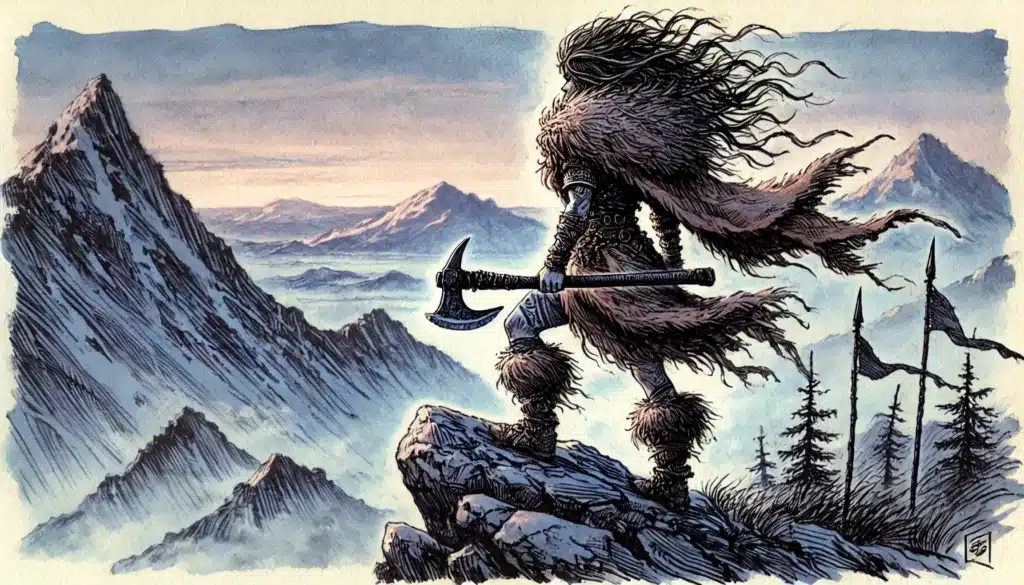
Barbarian
Barbarians live by the engine-roar in their blood. Rage does not just swell—it explodes, fueling feats of muscle and savage instinct. On the front lines, Barbs tank hits that would shatter lesser heroes, soaking pain with a grin and swinging back twice as hard. Their motives can be simple—freedom, vengeance, adrenaline, or laughter on the battlefield.
Strength stands unchallenged. Every round crackles with raw kinetic power—mauls break shields, axes cleave monsters, and walls become suggestions. Barbarians thrive in melee, undaunted by wounds, their presence anchoring every high-stakes clash. Standing still feels alien; this class is about hurtling forward, breaking the grid, and painting the ground in action.
Durability is legendary. While other classes fret about defense, Barbarians wade deep, fueled by resistance to physical damage and surges of temporary hit points. Enemies must focus fire or risk being trampled. The 2024 overhaul smoothed rage mechanics and made features like Reckless Attack carry more flavor, letting you truly shape the tide.
Each subclass brings a unique vision of primal power. Spirits, animals, storms, and wild magic all roil beneath the surface. Your choice decides if you are a spectral warlord, unbending juggernaut, or a walking natural disaster.
Barbarian Subclasses
- Berserker: Pure frenzy, sacrificing all for raw attack
- Totem Warrior: Channel animal spirits for spiritual and physical gifts
- Storm Herald: Wield the fury of elemental storms
- Ancestral Guardian: Defend allies with ghostly protectors
- Zealot: Embody divine wrath and battle immortality
- Wild Magic: Channel unpredictable surges of chaos
- Battlerager (Dwarf): Don spiked armor for reckless offense
Barbarians play loud, direct, and thrilling. If you seek clarity—“I hit it, I win”—few classes offer more satisfaction. This is the roll-your-sleeves-up, wade-in-and-destroy path, with enough depth in subclasses to shake things up campaign to campaign.
New players gravitate here for a reason: minimal rules, maximum effect, instant engagement. There are strategic layers—when to Rage, when to Reckless—but a beginner never worries about spell slots or complex resources. The heart is never buried under math.
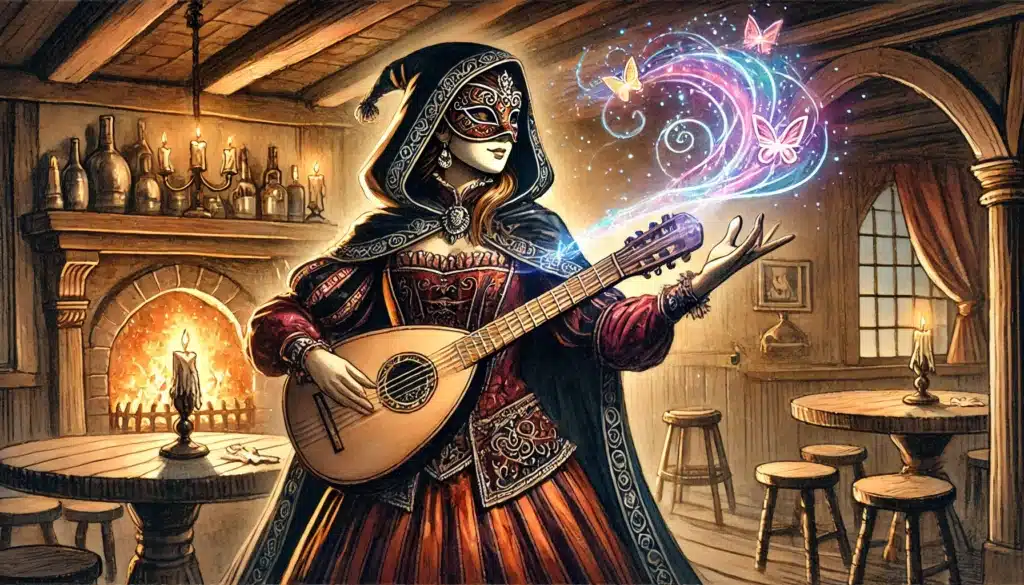
Bard
A grin, a quick word, a flash of inspiration—Bards cut through chaos with charm and brilliance. Every social encounter bends to their will, every story finds new color in their telling. Charisma leads, but a Bard’s best trait is improvisation: speeches, songs, and spells nuanced perfectly for the moment. No plan survives contact with a Bard.
Flexibility reigns. Bards borrow spells, shapeshift into any niche, and fill in for almost any missing role—damage, support, control, even healing, at a pinch. True power comes from Bardic Inspiration, sprinkled onto allies at the perfect time to turn failure into triumph. Whether at court or in the grit of the dungeon, Bards set the mood.
Spotlight-sharing defines their rhythm. The story always finds a way to involve a Bard. Helping others shine makes them beloved at the table, but their skill suite and spell list leave room for plenty of grandstanding, too. In the 2024 rules, Bardic utility only expands, with earlier subclass access and slicker scaling.
Try my AI Tabletop RPG generators...and an extensive library of content!
Each subclass—College—frames a different kind of legend. Some court danger, others chase art, battle, or subterfuge. Creative control is core: you design your character’s arc in every retold tale.
Bard Subclasses
- College of Lore: Swiss army knife, master of skill and versatility
- College of Valor: Inspiring warrior-poet, battlefront presence
- College of Glamour: Enchanter and social manipulator, fey themes
- College of Swords: Weapon-twirling, swashbuckling duelist
- College of Whispers: Keeper of dangerous secrets, psychic edge
- College of Creation: Summons wonders from art and imagination
- College of Spirits: Channels ghost stories for magical effects
Adaptability is the Bard’s pride and peril. With so many options, it can be hard to focus. If you crave the chance to pivot, improvise, and use every skill, Bard sits at the table’s center. For the performer, the schemer, the helper, the master of moments, nothing outshines their spotlight.
Veteran players lean on Bard’s toolkit for intricate schemes. Newcomers marvel at all the things they can do, but risk feeling lost if they try to do everything at once. A good party lets the Bard lead, follow, or vanish into the background as mood demands.
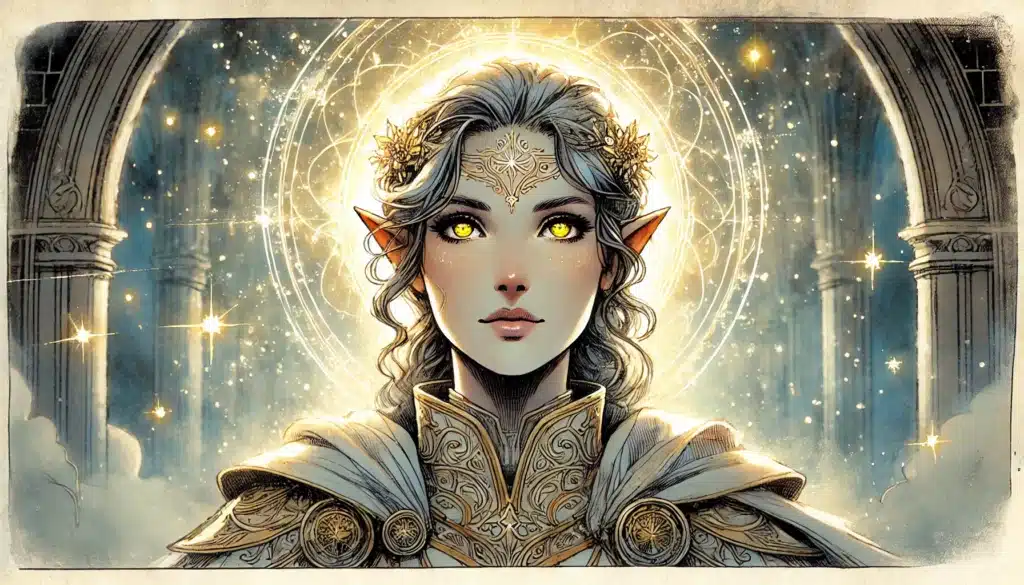
Cleric
Prayer is not a crutch; it is a weapon. Clerics wield the hopes and fears of the faithful, channeling them into radiant healing, baneful curses, or martial conviction. Alignments and gods matter—what you revere shapes what you wield. The divine answers, and the answer is power.
Clerics own healing, but that stereotype belies their versatility. Spells run from restoration to destruction, protection to control. Wisdom guides their hand, and the right Domain can turn a humble acolyte into a towering juggernaut. In 2024, scaling improves, making both durability and spell mastery more consistent than ever.
Domain selection sculpts identity. War, Light, Trickery, Knowledge—each warps your spell list, churning up new playstyles. The Cleric’s core trick is adaptability; prepare a new spell list every day, remaking yourself to meet fresh dangers. You are never stuck.
DnD’s best Clerics serve as both sword and shield on the battlefield, able to stand shoulder-to-shoulder with Fighters or bring the dead back from the abyss. In tension or jubilation, Clerics steady the party and raise the stakes.
Cleric Domains
- Life: Healing and radiant restoration
- Light: Fire and blinding power, anti-undead
- War: Divine might, martial support
- Tempest: Storm and thunder, control and punishment
- Trickery: Illusion, deception, and guile
- Knowledge: Lore and insight, magical awareness
- Nature: Elemental control, animal magic
- Order: Law, authority, and defensive tactics
- Grave: Death and undeath balance, anti-necromancy
- Forge: Fire and creation, toughened defenses
- Peace: Diplomacy and powerful support magic
- Twilight: Night magic, protection, and vision
Clerics straddle offense and support, healing and harm. Each spell prepared, each Domain power selected, each prayer spoken, shapes your campaign’s tenor. If you crave mythic responsibility, Cleric rewards you with both pressure and glory.
Do not pigeonhole this class. A Peace Cleric can outshine a Paladin as protector, a War domain can smash heads with the best, and Knowledge can unmask every riddle. The divine is vast, and so is your footprint.
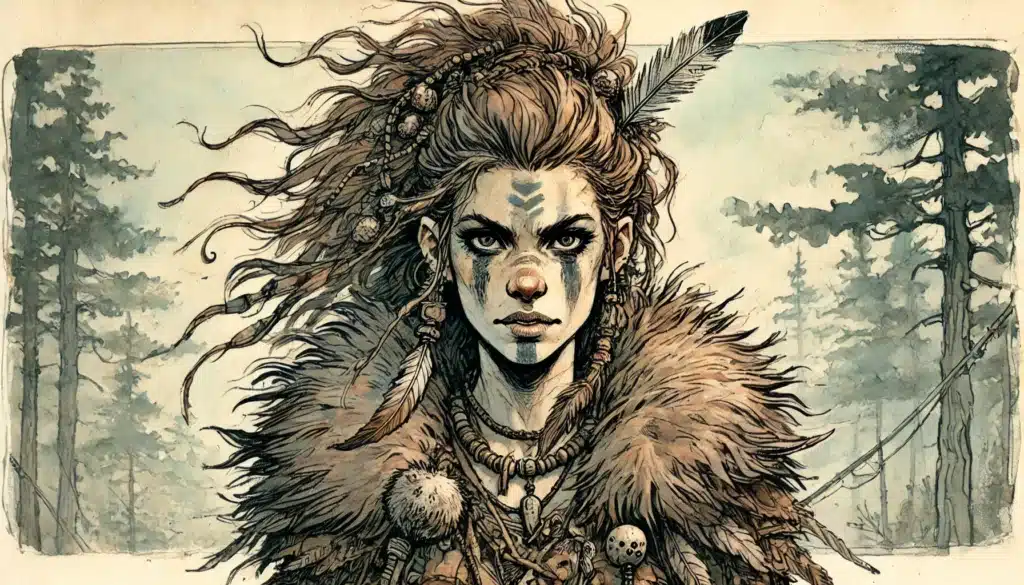
Druid
Roots push deep beneath the city—nature does not forget. Druids shape realms, beasts, and weather, binding their fates to the wild. They command elusive magics, their spell list running rich with control, summoning, and transformation. Ecologists, outcasts, guardians, or feral, Druids never blend in.
⚔️ Fantasy RPG Random Tables Books
Make life as a Gamemaster easier…
If you play Dungeons & Dragons, Pathfinder, or other fantasy RPGs, this
RPG random tables series
is packed with encounters, NPCs, treasure, and more. Available in eBook or print—either way, you’ll have a wealth of adventure ideas at your fingertips.
Wisdom guides each choice. Magic comes in two flavors: subtle manipulation (fog, charm, summon) and raw metamorphosis (the infamous Wild Shape). Shapeshifting slams you into the action—bear, panther, eel—every fight a new form, every spell a new solution. You are a toolkit and a mystery.
Control is bread and butter. Walls of thorns, entangling growth, starlight that blinds—Druids dictate terrain like chessmasters, making every battle their own. Spell versatility shines with strong healing and area denial, but offensive nukes can run thin. Pick your Circle wisely; each reimagines what Druid means.
The new 2024 rules keep Wild Shape juicy but easier to track, narrowing convoluted stat block issues and streamlining Circle features so every Druid, beast or sage, gets in on the action early.
Druid Circles
- Land: Nature’s classic spellbook, terrain mastery
- Moon: Ultimate shapeshifter, melee brawler in beast form
- Shepherd: Summon swarms and spirits, animal leader
- Dreams: Healing, teleportation, and protection
- Spores: Necromancy, fungal magic, and decay
- Stars: Cosmic guidance, astral forms, support and offense
- Wildfire: Fire manipulation, rebirth, spirit companions
Druids excel as tactical masterminds and unpredictable shapeshifters. Some campaigns feed their power—long outdoor travel, lots of downtime—but tight dungeon crawls or urban stories can rein in their breadth. Good DMs weave the wild into every challenge.
Those new to spellcasting may find Druid’s shifting forms and spell preps daunting. Veterans thrive on possibilities; every challenge can be approached from four directions. The wilderness is never just scenery—it becomes your weapon.
Fighter
Steel on steel, tactics layered over muscle. Fighters stand firm at the crossroads of possibility: every weapon, every maneuver, every path. The 2024 update gave them Weapon Mastery, turning even basic attacks into tactile, brutal gambits. Fighters do not just attack; they dominate the battlefield.
Strength or Dexterity fuels them. Finesse or brute force, calculated parries or reckless charges—Fighter adapts to any combat need. Each ability score improvement opens feats, letting you customize with blinding speed. Whether a new player or a tactics fiend, Fighter offers a walkable climb and a peak to master.
Martial mastery sits at the heart. Extra Attack and Action Surge let you outstrip other classes in action economy, while Second Wind and Indomitable keep you on your feet. Simpler than most, but with new depth, Fighters run the spectrum from “cut and thrust” to “tactical engine.”
Subclasses twist the archetype, doubling down on a motif or blending in magic, cunning, or power. 2024’s revision spaced out features for clarity, keeping the Fighter’s growth steady and true.
Fighter Subclasses
- Champion: Reliable crits, effortless athleticism
- Battle Master: Tactical maneuvers, control over the field
- Eldritch Knight: Arcane-martial hybrid, spells plus steel
- Cavalier: Mounted combat and battlefield presence
- Samurai: Peerless resolve, social and physical might
- Arcane Archer: Magical arrows and archer’s tricks
- Echo Knight (UA): Temporal duplicates, reality-warping tactics
- Rune Knight: Magic runes, growth, and versatility
- Psi Warrior: Telekinetic strikes, defensive options
Fighters scale with ambition. The class can be a training ground for new players or a blank slate for the rules lawyer. Depth or simplicity—choose your adventure. At level one or twenty, Fighter is never boring.
Subtlety lives in the details. Feats, maneuvers, weapon choices, and multiclass tricks reward the student and the improviser. The martial backbone of any party, a Fighter always deserves their place in the legend.
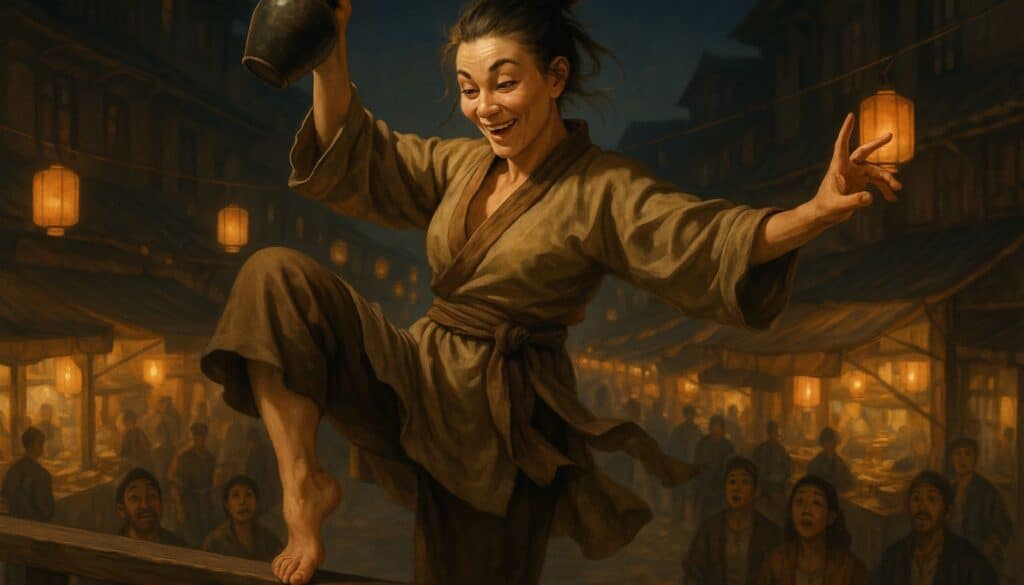
Monk
Fierce discipline, impossible movement, and the quiet of empty hands—Monks bring supernatural martial arts into the heart of battle. Their bodies are their weapons, enhanced by ki, ancient tradition, or untamed spirit. Each Monk is a living contradiction: soft words and shattering fists, serene and devastating.
Dexterity and Wisdom align. Monks dart across the grid, untouchable and precise. Every turn brings a choice—flurry of blows, open hand deflection, Step of the Wind to vanish from harm. Ki fuels them, but never rules them. Few enemies keep up when a Monk sets the pace.
Mobility is king. The battlefield shrinks for a Monk; they leap walls, dash across rooftops, topple giants in a blink. Stunning Strike, defensive evasion, and unique movement break the game’s assumptions, letting Monks outmaneuver foe and friend alike. In 2024, features and subclasses tighten, ki pool tweaks improve flow, and new options like the Tattooed Warrior open fresh takes.
Every subclass reframes the Monk as a different legend—shadow assassin, elemental bender, open-hand master, even psion. Each flavor brings new depth, and every campaign lets a Monk slip into a new myth.
Monk Subclasses
- Open Hand: Martial arts perfection, flurry tricks
- Shadow: Ninja and teleportation, darkness mastery
- Four Elements: Elemental bender, spell-flavored strikes
- Long Death: Fear and undeath, chilling resilience
- Sun Soul: Laser monk, radiant blasts
- Kensei: Weapon finesse, martial flexibility
- Mercy: Healing and toxic power
- Astral Self: Manifest spiritual form for unique attacks
- Tattooed Warrior (UA): Magical tattoos grant diverse powers
Much maligned in the past for damage, 2024’s Monk carves out fresh ground. More powerful, less resource-starved, and more distinct from Rogue or Fighter. Every punch, kick, and leap matters.
The Monk rewards players who want to move. If you like playing chess at double speed, or want your backstories inked into your very skin, Monk stirs up unorthodox victory.
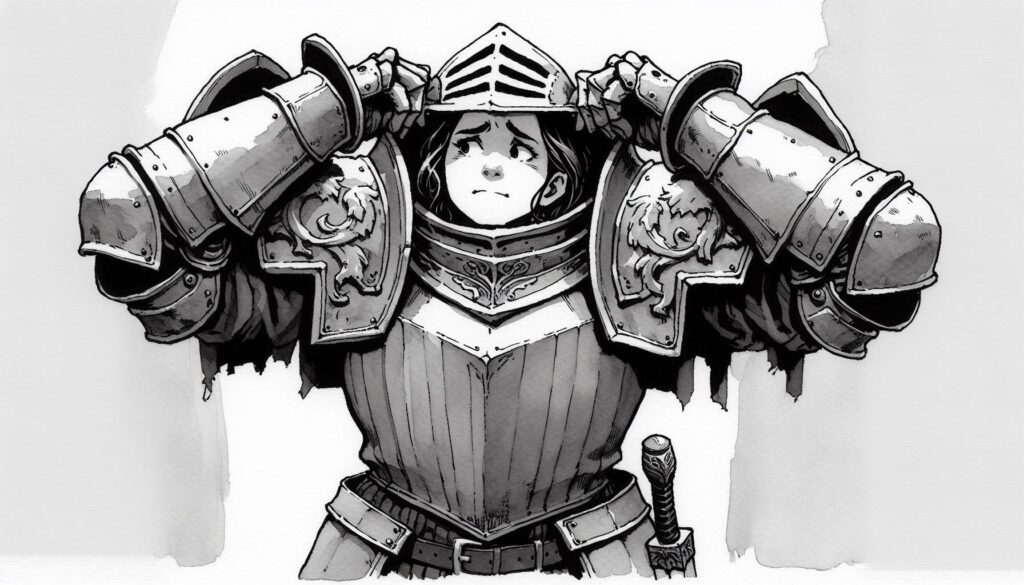
Paladin
Light glints from armor, banners ripple, and the world itself seems to pause. Paladins stride into darkness lit from within. Smiting divine energy into unholy flesh, shining with auras that steady friends, Paladins are both sword and shield, oath and avenger.
Charisma and Strength intertwine. Paladins cast spells, heal, and fight—not as jacks-of-all-trades, but as true hybrids. No class brings more burst than the sacred smite, or more determination. Auras of protection spread confidence. In 2024, aura scaling and spell slots have been smoothed, letting the Paladin play clean from low to high levels.
Durability is peace of mind. Heavy armor and Lay on Hands keep you up. Spells, auras, and oaths add true tactical weight. Few enemies want to face a Paladin alone—fewer still survive it.
The ultimate thrill lies in the Oath. Each Oath reshapes play. Will you be a liberator, an executioner, or something stranger? 2024 lets you taste your Oath faster, coloring your campaign from the outset.
⚔️ Fantasy RPG Random Tables Books
Make life as a Gamemaster easier…
If you play Dungeons & Dragons, Pathfinder, or other fantasy RPGs, this
RPG random tables series
is packed with encounters, NPCs, treasure, and more. Available in eBook or print—either way, you’ll have a wealth of adventure ideas at your fingertips.
Paladin Oaths
- Devotion: Classic chivalric, radiant and pure
- Ancients: Protectors of nature and old ways
- Vengeance: Relentless, anti-evil crusader
- Glory: Heroic inspiration, athletic might
- Redemption: Negotiate, pacify, and shield
- Conquest: Fear and domination
- Watchers: Anti-extraplanar, protective
- Crown: Leadership, protection, political play
Paladins call to the heroic. If you want to chase justice, spark hope, or stand unyielding, this is your class. Roleplayers relish the thematic weight—nothing is more memorable than a Paladin’s vow, or a crisis of faith mid-adventure.
Their only risk: rigidity. Paladins work best when vows fuel choices, not choke stories. Good parties play along, weaving oaths into the campaign tapestry.
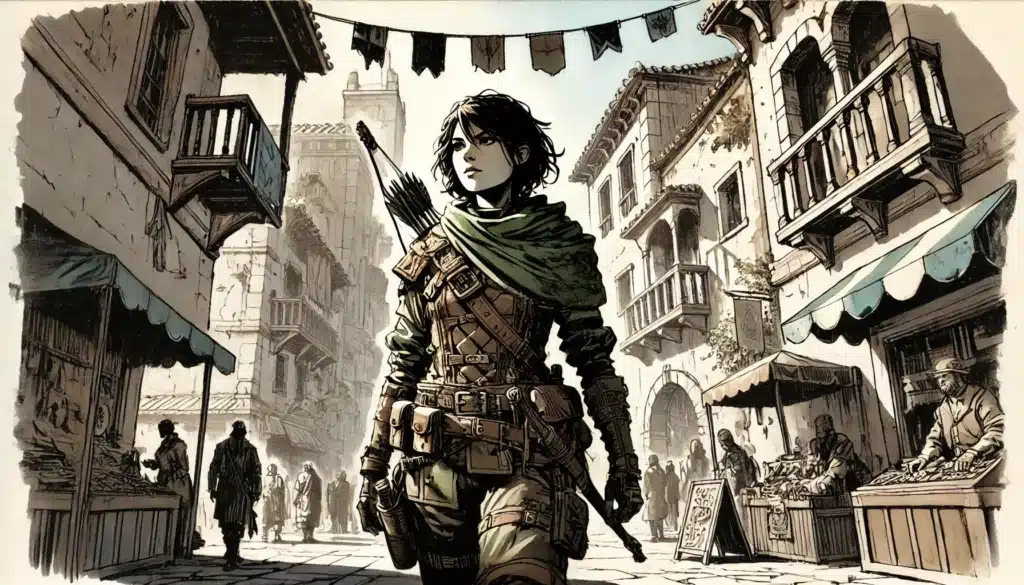
Ranger
No city wall can check a Ranger’s stride. Wilderness, quarry, and stalking danger define this hybrid class. Martial and nimble, Rangers use magic, skill, and cunning to survive—and thrive—where others falter. Animal companions, signature spells, and flexible combat make every Ranger unique.
Dexterity is the foundation, with a dash of Wisdom for spells. Rangers mix archery, swordplay, and spellcraft. They hunt monsters, scout ahead, and thwart ambushes before enemies notice. In the 2024 rules, consistency reigns: Favored Enemy and Natural Explorer have evolved, making every terrain feel like home, not just a stat block.
Scouting is their forte. Trackers, messengers, spies—Rangers slip between roles, weaving spells like Hunter’s Mark and Pass without Trace into any plan. The hybrid nature (martial with magic) sets them apart from both Fighter and Druid.
Subclasses—Conclaves—define your legend. Beast-tamer, gloom-stalker, city-hunter, horizon-walker—choice crafts both tactics and flavor.
Ranger Conclaves
- Hunter: Versatile slayer, tactical choice
- Beast Master: Animal companion at your side
- Gloom Stalker: Underdark, shadow, and fear
- Horizon Walker: Planar travel and teleportation
- Monster Slayer: Bane of supernatural, anti-mage
- Fey Wanderer: Trickery and fey charm
- Swarmkeeper: Clouds of insects or spirits
Rangers found new life in 2024. Early abilities matter. Long-term utility no longer fades. If you want a jackal smile, a wild soul, and tactical flexibility, Ranger offers a taste of almost every D&D strand—magic, martial, stealth, and skill.
Players once burned by old Ranger will find a new love here. The class now rewards consistent play, with fewer “dead” levels and better cross-party support. Every campaign has wild places that reward a keen-eyed hunter.
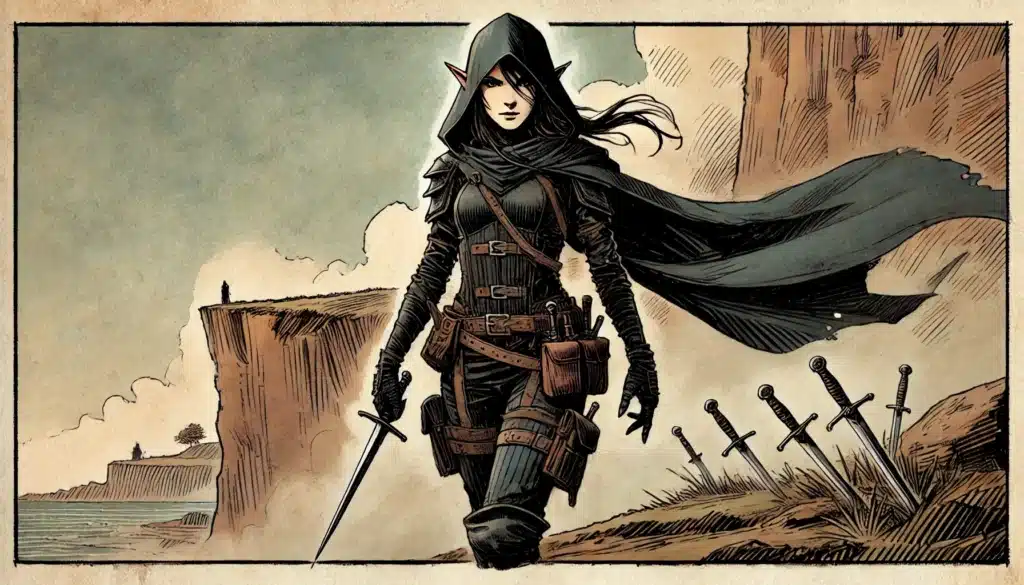
Rogue
Gloved hands pick locks, boots pad over marble, and daggers flicker in candlelight. Rogues swim in shadows and secrets, using technique and cunning to undo obstacles that brute force shrugs against. Every encounter is a chance for concealment, misdirection, and pinpoint assault. Rogues make the impossible look effortless.
Dexterity is everything. Skills stack high. Sneak Attack lands like a hammer’s kiss—when executed right, it topples monsters twice your size. Rogues thrive on movement, bonus actions, and elegant escapes. No two turns look the same.
Scouting and skill mastery rule the early game. Rogues unlock traps, decode language, sweet-talk gatekeepers, and topple foes with a single, precise blow. Cunning Action gives a whiplash sense of mobility—hide, dash, disengage. 2024’s tweaks make core features more reliable and ramp up survivability without handholding.
Subclasses define specialty. Assassins, gamblers, spies, arcane tricksters—all anchored in unique utility and flavor.
Rogue Archetypes
- Thief: Classic burglar, bonus action tricks
- Assassin: Lethal ambusher, devastating crits
- Arcane Trickster: Illusion spells and misdirection
- Swashbuckler: Flashy, mobile duelist
- Mastermind: Social manipulation and intrigue
- Scout: Wilderness scout, skirmisher
- Inquisitive: Sherlock Holmes, perception powers
- Phantom: Haunting, necrotic tricks, whispers of the dead
- Soulknife: Psychic blades, mental intrusion
Rogues reward the clever and resourceful. Every problem, every locked door, every unwary guard becomes a puzzle, not a wall. Players who love improvisation, misdirection, and out-of-combat play will not find better.
Loners thrive here, but Rogues shine brightest in synergy—setting up the Fighter, shadowing the Bard, or weaving into the Monk’s chaos. Few things in D&D are more satisfying than a plan executed to wicked perfection.
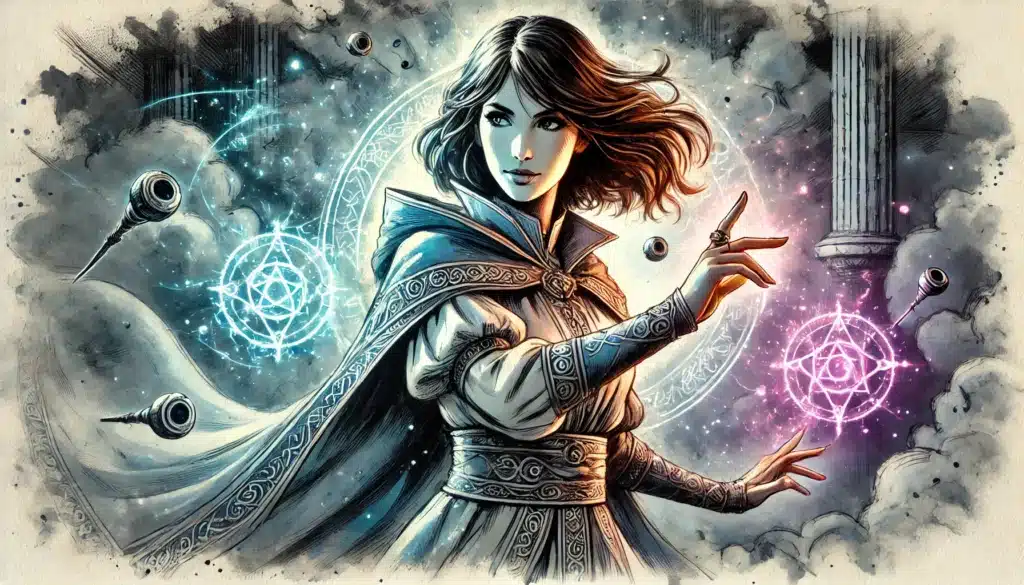
Sorcerer
Born with magic surging through their blood, Sorcerers channel the impossible by instinct. Spells erupt, metamagic warps outcomes, and every incantation throbs with chaos or destiny. Sorcerers are fireworks—brilliant, unpredictable, and capable of feats no book-bound Wizard would dare.
Charisma is a Sorcerer’s compass. Their spell list is focused and lean; every choice is momentous. Metamagic brings the wild card—bend range, double targeting, or twist time. Fewer spells known means sharper decisions, higher stakes. Limitations are a crucible, not a prison.
High-impact, high-risk defines every day. Sorcerers run hot. Their best moments come from clutch spell twists and ingenious improvisation. The 2024 update widened Metamagic and added UA origins, letting every Sorcerer play like a bloodline legend.
Each origin sculpts your spellcasting. Dragon, darkness, storms, wild chance, even psychic legacy—all color your powers and your story from the start.
Sorcerer Origins
- Draconic Bloodline: Resilient and elemental, dragonlinked
- Wild Magic: Random surges, unpredictable power
- Divine Soul: Healer sorcerer, clerical spells
- Shadow Magic: Darkness, fear, necrotic
- Storm Sorcery: Weather magic, flight
- Aberrant Mind: Psionics and telepathy
- Clockwork Soul: Order, anti-chaos, unique spell list
- Ancestral Sorcery (UA): Customizable, draws on varied bloodlines
Sorcerers embody the thrill of limitation—what you pick matters, and improvisation is your friend. This is not a class for planners or hoarders, but for artists, gamblers, and those who savor the rush of a single, perfect spell.
The table’s energy surges when a Sorcerer takes risks. Managed well, they are worldbreakers; misplayed, they vanish in silence. Sorcerers thrive on clutch moments and bravado.
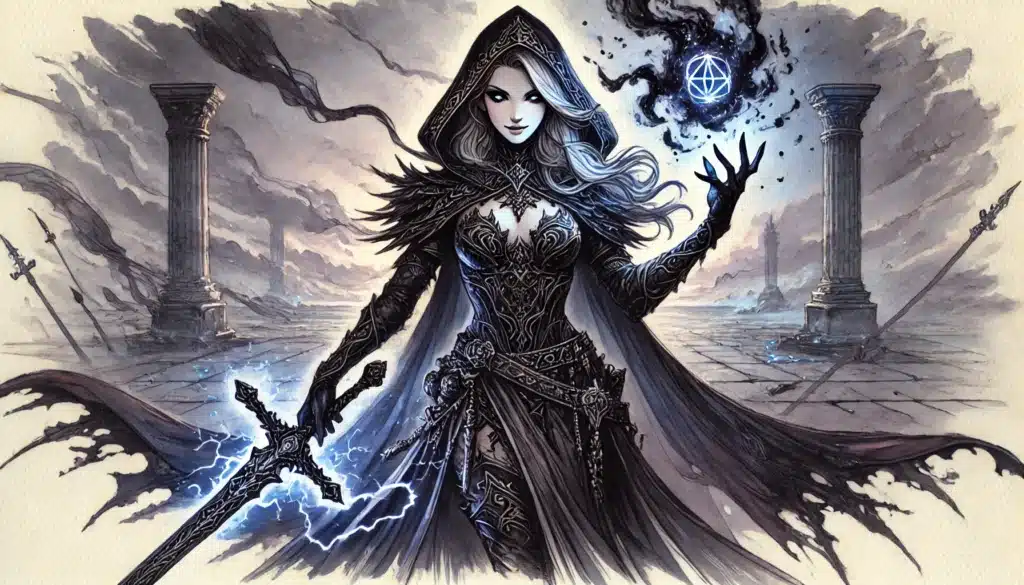
Warlock
Whispers stain the night air and bargains twist fate’s spine. Warlocks barter for strength, brandishing gifts from powers both alien and divine. Each invocation can reshape reality, every pact trickles dark promise. Warlocks are proof that the quickest route to power often has the strangest cost.
Charisma leads the way, but customizability runs the show. Spell slots are few, but invocations—modular powers—grant new spells, at-will abilities, and wicked tricks. Pacts define flavor: chain for familiars, blade for war, tome for arcana. Patron choice forges both story and mechanics.
Short rest pacing is key. Unlike Wizards or Sorcerers, Warlocks regenerate magic quickly, tossing spells with abandon. Table pacing shapes the class; in games with frequent downtime, Warlocks outshine. In marathon slogs, they may falter.
Patrons are not just flavor—they are destiny. Each one colors your spell list, roleplay, and attitude, giving you a line into the world’s mysteries and a timeless enemy or ally.
⚔️ Fantasy RPG Random Tables Books
Make life as a Gamemaster easier…
If you play Dungeons & Dragons, Pathfinder, or other fantasy RPGs, this
RPG random tables series
is packed with encounters, NPCs, treasure, and more. Available in eBook or print—either way, you’ll have a wealth of adventure ideas at your fingertips.
Warlock Patrons
- Archfey: Enchantment, illusion, fey bargains
- Fiend: Fire and corruption, devil’s luck
- Great Old One: Madness, psychic intrusion
- Hexblade: Sentient weapon, martial edge
- Celestial: Healing, radiant, subversive kindness
- Undying: Undeath, immortality themes
- Fathomless: Oceanic, tentacles and abyssal power
- Genie: Elemental boons, wishcraft
No class is more table-dependent. Warlocks thrive with creative DMs who let invocations and pacts shine, but may struggle if pace slows. Choosing when to shine and how to bargain is half the fun. Warlocks are the ultimate custom class.
Versatility breeds risk. Not every campaign rewards short, explosive magic or sustained charisma. Still, Warlocks excel at making every moment count.
Wizard
Magic is a discipline, not an accident. Wizards pore over tomes, hunched beneath candles, bending spells to theory and will. Their spell lists sprawl with options—no one boasts more variety or depth. Wizards are the class of legacy: every famous archmage, every iconic spell, every magical solution.
Intelligence is law. Preparation matters—Wizards pick daily spells from their vast repository, letting each morning’s choices sculpt the day’s play. Utility, control, and devastation vie for your spell slots. This is the ultimate planner’s paradise.
Versatility is unmatched. Rituals, utility, damage, and control all live in your spellbook. No one else prepares for every possibility, every nuance. Subclasses—Schools—specialize and reinterpret how magic works, letting you focus on charm, evocation, necromancy, and more.
Preparation pays off. Optimizing spells, anticipating dangers, and leveraging every magical rule can make the Wizard the most rewarding—and intellectually demanding—choice at the table.
Wizard Traditions
- Abjuration: Defense, wards, shields
- Conjuration: Summoning and teleportation
- Divination: Foresight and manipulation
- Enchantment: Control and charm
- Evocation: Raw offensive power
- Illusion: Trickery, deception, and misdirection
- Necromancy: Undeath and life mastery
- Transmutation: Alteration, buff/debuff, utility
- Scribes: Custom spellcasting, magical flexibility
- War Magic: Battle-centric spells and defenses
- Bladesinging: High-mobility, martial wizard (Elf flavor)
Wizards reward the strategist and punish the careless. Every spell slot and every long rest becomes a puzzle. The class asks a lot; it gives more. If you hunger for depth, puzzle-solving, experimentation, and iconic moments, Wizard stands alone.
Preparation is king but flexibility is queen. Wizards shine brightest when they can plan, anticipate, and adapt—a campaign with few resources or rest can challenge even the best.
Playtest Spotlight: The Psion
Mind scythes through reality, carving new realms of possibility. Psions, a UA playtest marvel, channel Intelligence into pure psionic energy, breaking D&D’s physics and expectations. No arcane runes, no divine prayers—just mental grit and inexorable thought.
Their unique currency, psionic dice, powers disciplines that warp the field. These dice grow with you, fueling psychic attacks, telekinetic lifts, force shields, and reality-warping tricks. Every action feels experimental, alive with possibility. No one controls space, mind, or perception like a Psion.
Playing a Psion is a cerebral thrill—choice and tension at every turn. One round you might reshape gravity; the next, you might shatter a tyrant’s will. Focus on controller and utility roles gives the class breadth without overwhelming complexity. The dice system encourages risk and reward, blending tactical play with cinematic impact.
Compared to the Wizard, Psions wield fewer spells but more raw flexibility. Versus the Sorcerer, they lack metamagic but gain discipline-bound powers and dice-fueled option trees. Every subclass twists telepathy, kinetic power, or thought-magic in new directions. No legacy class plays quite like this.
Try my AI Tabletop RPG generators...and an extensive library of content!
Each discipline—Telepath, Psykinetic, Psi Warper, Metamorph—reshapes what it means to be a mindmage. Telepaths dominate interaction; Psykinetics bend space; Warpers distort causality; Metamorphs recombine powers mid-battle.
The Psion stands as D&D’s promise of the future—experimental, balance-in-progress, always DM-constrained. Every table will need to calibrate for power and story. Still, in the right hands, this class unlocks cerebral, off-beat, and unforgettable moments.
Playtest material always fluctuates. Some campaigns will let you build a dream. Others will keep things tight while waiting on full release. Stay flexible—talk to your DM, and treat Psion as both opportunity and experiment.
Campaigns that value mind games and creative solutions reward Psions. Players who want to bend the rules, explore new systems, or outmaneuver enemies at every turn find a home here. No class demands more lateral thinking and self-discipline.
Multiclassing, Briefly
For some, a single class can never be enough. Multiclassing lets you blend archetypes, chasing fusion and synergy at the cost of clean progression. Ability score minimums keep you honest: Strength or Dexterity for martial dips, Charisma for gish hybrids, Intelligence or Wisdom for spell-focused combos.
⚔️ Fantasy RPG Random Tables Books
Make life as a Gamemaster easier…
If you play Dungeons & Dragons, Pathfinder, or other fantasy RPGs, this
RPG random tables series
is packed with encounters, NPCs, treasure, and more. Available in eBook or print—either way, you’ll have a wealth of adventure ideas at your fingertips.
The strengths cascade. Paladin/Hexblade nova-strikers blend spike damage and control; Rogue/Monks stitch together horrifying mobility and stealth. Fighter/Wizard hybrids weaponize magic with unmatched action economy. Each blend creates a new tactician, a new voice, a legend with edges that no single class can offer.
Patience matters. Multiclassing delays Extra Attack, high-level spells, or capstone features. Tradeoffs run both ways; every level counts. Solid plans map out levels one through eight, knowing when a spike in utility or power outweighs a lost feature.
This level of synthesis works best for veterans or storytellers who want mechanical teeth for their concept. Communication is essential—talk to your table about your plans, and make sure party roles do not unravel in the pursuit of the perfect dose of spice.
Popular Multiclass Combinations
- Paladin/Sorcerer: Smites powered by superior spell slots
- Fighter/Rogue: Crit-fishing, action surge, and skills
- Bard/Warlock: Spellcasting and at-will Eldritch Blast
- Cleric/Wizard: Maximum preparation, divine power plus arcana
- Barbarian/Fighter: Pure martial, durability and options
- Monk/Rogue: Mobility and relentless offense
- Fighter/Wizard (Bladesinger): Martial flexibility, arcane tricks
- Ranger/Druid: Beast mastery and natural magic
- Warlock/Sorcerer: Charisma synergy, spell slot cycling
- Rogue/Bard: Social dynamo, skills, and secrets
- Artificer/Battle Smith/Fighter: Magical defense and offense
- Barbarian/Druid: Shapeshifter berserker
- Hexblade Warlock/Paladin: CHA-based attacks, massive burst
Advance with care. Some combos shine early, others build slowly. Most players should plan ahead for synergy, knowing that spreading thin can cost as much as it yields.
Every dip of a new class should serve story and party. True multiclass mastery comes from anticipation, patience, and a keen eye for table needs. Learn your curve before you leap.
Quick Picks by Player Type
D&D matches class to personality. Some seek direct action, others live for puzzles, and some prefer the spotlight. Use the chart below as a launchpad—but remember: the campaign and party always set the final mood.
| Player Type | Class/Subclass Examples | Why It Fits | Pitfalls |
|---|---|---|---|
| Newcomer | Fighter, Barbarian, Light Cleric | Simple rules, quick impact | May yearn for depth later |
| Power Gamer | Paladin/Sorcerer, Gloom Stalker | High burst, strong combos | Delayed features, multiclass traps |
| Storyteller | Bard (Lore), Warlock (Archfey) | Roleplay focus, flexible | May sacrifice combat power |
| Tactician | Battle Master, Divination Wizard | Lots of options, control | Decision paralysis |
| Supporter | Life Cleric, Peace Cleric, Artificer | Group boost, healing | Can feel reactive, not proactive |
| Lurker/Scout | Rogue (Scout), Ranger, Shadow Monk | Stealth, recon | Limited in direct combat |
These profiles spark direction, but should never fence you in. A quiet player can anchor a group with a Paladin’s resolve; a would-be spotlight-stealer can experiment with understated precision as a Druid or Rogue.
Let every class be a starting point. Campaign style, DM philosophy, and table chemistry all sway what actually works best. The right fit emerges only in play, not in guides.
Final Tips for Better Builds
Builds are only as strong as their foundation. Sync your stats, subclass, and feat choices with both your own goals and your group’s needs. Spellcasters: never ignore concentration checks, and weigh feat synergies for survivability and punch. Martial characters: look for 2024’s new weapon mastery options to eke out every extra advantage.
Choose feats that amplify your strengths but shore up gaps. Think about how your capabilities interact—Polearm Master triggers with Sentinel to lock down foes, while Resilient (CON) keeps those crucial spells running. The new rules favor creative combinations and make it easier to tailor choices for the campaign at hand.
Synergy is a living organism. Magic Initiate kicks open spell access; Crossbow Expert and Sharpshooter make archers deadly; Lucky or Alert reshapes outcomes in unpredictable ways. Good builds anticipate the party’s direction, shoring up weak spots or doubling down on a shared plan.
Table talk matters more than perfection. Share your vision with your DM, and use session zero to smooth mechanical wrinkles. Campaigns move best when characters build together rather than in competition.
Feat and Build Synergies
- Polearm Master + Sentinel: Zone control Paladins
- Resilient (CON) + War Caster: Indomitable concentration
- Sharpshooter + Archery Style: Ultimate ranged Rangers
- Magic Initiate + Sorcerer: Spell flexibility
- Crossbow Expert + Quickened Spell: Multishot Sorcerer
- Lucky + Wizard: Safety net for clutch spells
- Fey Touched + Diviner: Reroll and utility boosts
- Great Weapon Master + Reckless Attack: Devastating Barbarians
- Mobile + Rogue: Uncatchable skirmishers
- Observant + Inquisitive Rogue: Unrivaled investigator
- Eldritch Adept + Warlock: Invocation at-will power
- Inspiring Leader + Bard: Party-wide temp HP
- Skill Expert + Expert Classes: Maximum skills
- Tough + Barbarian: Unkillable frontline
- Ritual Caster + Cleric: Infinite low-level utility
- Telekinetic + Psi Warrior: Battlefield control
- Healer + Life Cleric: Efficient group recovery
Marry optimization with vision. Every build shines brightest when it answers a creative urge, not just a spreadsheet. D&D is story, not calculus. The right feat is the one that brings your character to life on the page and at the table.
Always err on the side of delight, not just damage. Talk to your DM about how your build fits the setting, and be flexible if house rules or campaign style strain your plans. The best-designed character is useless if they never fit the table’s pulse.
A table full of stars can still sputter if no one checks for healing or scouting. Balance is not just statistics—it is energy, drama, and narrative slack. Plan, but never be afraid to pivot.
Final Thoughts on DnD Classes
D&D classes contain the pulse and poetry of fantasy. They shape not only the rules but the heart of every session, dictating what is possible and what is dreamed. You are not just building stats; you are crafting the myth you want to live, the legend you want friends to remember.
The 2024 revisions boiled away the cruft, bringing each archetype nearer its ideal. Every class gleams, newly accessible, but never hollow. If you loved Barbarian’s fury, Druid’s mystery, or Wizard’s power, your favorites wait with open arms—and new tricks.
Thirteen classes now anchor the game’s core—each one a world and a promise. Playtest additions like the Psion tease at futures yet unwritten. Campaigns are richer, combos more interesting, and the very act of choosing more vibrant and meaningful.
You do not have to pick perfectly. The “best” class is not a number—it is the one that puts a grin on your face or a quaver in your voice at the table. The right mix for your party and your story changes every campaign, every arc, every twist of fate.
Let yourself experiment. Let the table collaborate. Tell the story that seizes you, not just the one that solves the puzzle. In D&D, as in life, the journey is richer when you honor both the legend on the page and the joy at your fingertips.
⚔️ Fantasy RPG Random Tables Books
Make life as a Gamemaster easier…
If you play Dungeons & Dragons, Pathfinder, or other fantasy RPGs, this
RPG random tables series
is packed with encounters, NPCs, treasure, and more. Available in eBook or print—either way, you’ll have a wealth of adventure ideas at your fingertips.

